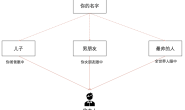一、前言
- Springboot源码解析是一件大工程,逐行逐句的去研究代码,会很枯燥,也不容易坚持下去。
- 我们不追求大而全,而是试着每次去研究一个小知识点,最终聚沙成塔,这就是我们的springboot源码管中窥豹系列。

二、Runner
- 假如我们想在springboot项目启动完成之后,做点什么,我们应该怎么办呢?
- 注意我们可以写在bean的初始化方法里面(我们后面讲),但是我们要用到其它已经加载了的bean的能力,又怎么办呢?
- 当然加顺序,加依赖也能解决,就是麻烦
这一节我们讨论一下springboot项目的Runner,Runner是在spring加载完毕执行的,springboot有两种Runner:
- ApplicationRunner
- CommandLineRunner
@FunctionalInterface
public interface ApplicationRunner {
void run(ApplicationArguments args) throws Exception;
}
@FunctionalInterface
public interface CommandLineRunner {
void run(String... args) throws Exception;
}
- 两种除了参数不同,其它没区别
- ApplicationArguments是对传参数组的封装,本质也没区别
- 只有执行顺序上有区别,下面源码会看到
三、用法
实现接口就可以了
import org.springframework.boot.ApplicationArguments;
import org.springframework.boot.ApplicationRunner;
import org.springframework.stereotype.Component;
@Component
public class HelloRunner implements ApplicationRunner {
@Override
public void run(ApplicationArguments args) throws Exception {
System.out.println("hello runner");
}
}
- 因为这时候spring已经加载完毕,你可以引入其它bean
- 启动项目,你会发现在日志最下方打印了上面的话
四、源码解读
我们直接找SpringApplication类的run方法,想看整体框架的去第一节。
public ConfigurableApplicationContext run(String... args) {
...
try {
...
callRunners(context, applicationArguments);
...
}
catch (Throwable ex) {
...
}
...
return context;
}
我们直接定位到callRunners方法。
private void callRunners(ApplicationContext context, ApplicationArguments args) {
List<Object> runners = new ArrayList<>();
// (1) 找到ApplicationRunner的实现类,加到list里面
runners.addAll(context.getBeansOfType(ApplicationRunner.class).values());
// (2) 找到CommandLineRunner的实现类,加到list里面
runners.addAll(context.getBeansOfType(CommandLineRunner.class).values());
// (3) 排序
AnnotationAwareOrderComparator.sort(runners);
// (4) 钩子回调
for (Object runner : new LinkedHashSet<>(runners)) {
if (runner instanceof ApplicationRunner) {
callRunner((ApplicationRunner) runner, args);
}
if (runner instanceof CommandLineRunner) {
callRunner((CommandLineRunner) runner, args);
}
}
}
总共分四步:
-
(1) 找到ApplicationRunner的实现类,加到list里面
-
(2) 找到CommandLineRunner的实现类,加到list里面
-
(3) 排序
-
(4) 钩子回调
我们看一下canllRunner
private void callRunner(ApplicationRunner runner, ApplicationArguments args) {
try {
(runner).run(args);
}
catch (Exception ex) {
throw new IllegalStateException("Failed to execute ApplicationRunner", ex);
}
}
private void callRunner(CommandLineRunner runner, ApplicationArguments args) {
try {
(runner).run(args.getSourceArgs());
}
catch (Exception ex) {
throw new IllegalStateException("Failed to execute CommandLineRunner", ex);
}
}
- 除了传参方式,都一样。
- 上面说的执行顺序问题,是先添加的ApplicationRunner,如果只有@Component,先执行ApplicationRunner
目录
springboot源码解析-管中窥豹系列之总体结构(一)
springboot源码解析-管中窥豹系列之项目类型(二)
springboot源码解析-管中窥豹系列之Runner(三)
springboot源码解析-管中窥豹系列之Initializer(四)
springboot源码解析-管中窥豹系列之排序(五)
springboot源码解析-管中窥豹系列之aware(六)
springboot源码解析-管中窥豹系列之web服务器(七)
springboot源码解析-管中窥豹系列之BeanDefinition(八)
springboot源码解析-管中窥豹系列之自动装配(九)
springboot源码解析-管中窥豹系列之EnableXXX(十)
springboot源码解析-管中窥豹系列之BeanFactoryPostProcessor(十一)
springboot源码解析-管中窥豹系列之BeanPostProcessor(十二)
欢迎关注公众号:丰极,更多技术学习分享。


